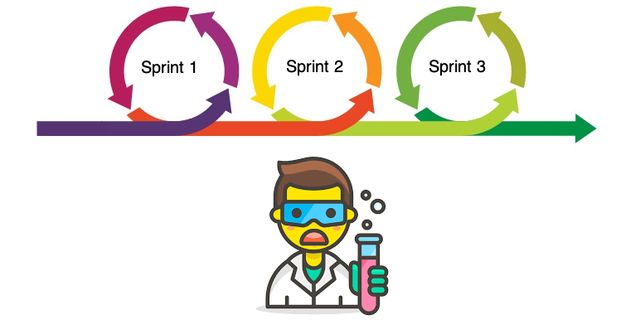Agile methodologies can provide numerous benefits to data science and analytics teams, such as quicker delivery, enhanced collaboration, and increased customer satisfaction. However, if not implemented effectively, Agile may unintentionally impede creativity in these teams. Here are a few ways Agile can potentially hinder creativity in data science/analytics.
- Potential problems
- Tight deadlines and sprints
- Focus on deliverables
- Lack of autonomy
- Constant and sudden changes
- Overemphasis on standardized processes
- Mitigation
- Complementary practices
- Frameworks tailored for data science projects
- References
Potential problems
Tight deadlines and sprints
Agile typically operates on tight timelines with fixed sprints. This can limit the time available for exploration, experimentation, and creative thinking. The emphasis on adhering to strict schedules may discourage innovative approaches that require more time to develop.
Focus on deliverables
Agile methodologies often prioritize delivering functioning solutions over long-term exploration. This focus on short-term goals can discourage team members from taking the time to explore complex problems creatively, resulting in a more practical, rather than innovative, approach.
Lack of autonomy
In some Agile implementations, teams may be closely supervised or required to adhere to preset workflows. This kind of micromanagement limits individual creativity, as team members may not have the freedom to experiment, propose alternative solutions, or take calculated risks.
Constant and sudden changes
Agile projects often involve iterative development with frequent changes in priorities and requirements. While this adaptability is beneficial in many cases, it can disrupt the creative process and impede the ability to think deeply about problems. Constantly switching gears may hinder the exploration of unconventional solutions.
Overemphasis on standardized processes
Agile frameworks provide standardized processes and practices that ensure consistency and predictability. While these are essential for efficient project management, a strict adherence to these processes can stifle creativity as it may discourage deviation from the prescribed methods.
Mitigation
Complementary practices
To prevent the potential negative impact on creativity, Agile methodologies should be complemented with the following practices:
- Allow dedicated time for exploration and learning outside of fixed sprints.
- Encourage cross-functional collaboration and knowledge sharing to foster creativity.
- Provide opportunities for innovation-driven initiatives alongside project-driven ones.
- Support a psychologically safe environment that allows for experimentation and failure.
- Recognize and reward creative thinking and experimentation within the team.
Frameworks tailored for data science projects
The data science teams need to adapt Agile practices to suit their specific needs and contexts, and to balance the trade-offs between speed, flexibility, and quality. Data science teams can adopt or modify a framework that is tailored for data science projects, such as the Team Data Science Process (TDSP) or the Agile Data Science Process These frameworks provide guidance on how to structure, execute, and manage data science projects using Agile principles and practices.
By adjusting Agile practices to accommodate these considerations, data science/analytics teams can create a balance between efficient project management and fostering creativity and innovation.
Any comments or suggestions? Let me know.
